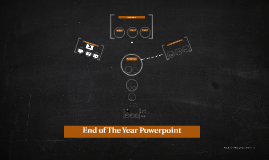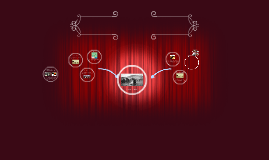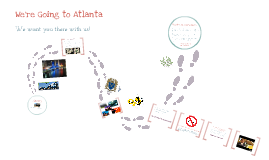End of The Year Powerpoint
Transcript: Electron Responding Pro Composite subatomic particles (such as protons or atomic nuclei) are bound states of two or more elementary particles. For example, a proton is made of two up quarks and one down quark, while the atomic nucleus of helium-4 is composed of two protons and two neutrons Father of the scientific method Differing Masses Drop at Same Speed Conclusion The Galilean moons are the four moons of Jupiter discovered by Galileo Galilei around January 1610. They are by far the largest of the moons of Jupiter and derive their names from the lovers of Zeus: Io, Europa, Ganymede, and Callisto. They are among the most massive objects in the Solar System outside the Sun and the eight planets, with radii larger than any of the dwarf planets. The three inner moons – Ganymede, Europa, and Io – participate in a 1:2:4 orbital resonance. The four moons were discovered in either 1609 or 1610 when Galileo made improvements to his telescope, which enabled him to observe celestial bodies more distinctly than had ever been possible before. Galileo's discovery showed the importance of the telescope as a tool for astronomers by proving that there were objects in space that cannot be seen by the naked eye. More importantly, the incontrovertible discovery of celestial bodies orbiting something other than Earth dealt a serious blow to the then-accepted Ptolemaic world system, or the geocentric theory in which everything orbits around Earth. Galileo initially named his discovery the Cosmica Sidera ("Cosimo's stars"), but the names that eventually prevailed were chosen by Simon Marius. Marius discovered the moons independently at the same time as Galileo, and gave them their present names, which were suggested by Johannes Kepler, in his Mundus Jovialis, published in 1614. Newton's First Law Proton Galileo Con Describe the next steps Galaxy Three Types of Variables Experimental Idea 2 Pro In Aristotle's theory of motion, projectiles were pushed along by an external force which was transmitted through the air. His medieval successors internalized this force in the projectile itself and called it "impetus." This impetus caused the object to move in a straight line until it was expended, at which point the object fell straight to the ground. While objects projected through small distances may appear to behave in this manner, under closer inspection and when viewing projectiles traveling greater distances, it becomes clear that projectiles do not behave in this manner. During the Renaissance, the focus, especially in the arts, was on representing as accurately as possible the real world whether on a 2 dimensional surface or a solid such as marble or granite. This required two things. The first was new methods for drawing or painting, e.g., perspective. The second, relevant to this topic, was careful observation. With the spread of cannon in warfare, the study of projectile motion had taken on greater importance, and now, with more careful observation and more accurate representation, came the realization that projectiles did not move the way Aristotle and his followers had said they did: the path of a projectile did not consist of two consecutive straight line components but was instead a smooth curve. Now someone needed to come up with a method to determine if there was a special curve a projectile followed. But measuring the path of a projectile was not easy. Using an inclined plane, Galileo had performed experiments on uniformly accelerated motion, and he now used the same apparatus to study projectile motion. He placed an inclined plane on a table and provided it with a curved piece at the bottom which deflected an inked bronze ball into a horizontal direction. The ball thus accelerated rolled over the table-top with uniform motion and then fell off the edge of the table Where it hit the floor, it left a small mark. The mark allowed the horizontal and vertical distances traveled by the ball to be measured. Pro Neutron Atom Molecule Parabolic Motions It was another essential insight that led Galileo, finally, to his most remarkable conclusion about projectile motion. First of all, he reasoned that a projectile shot from a cannon is not influenced by only one motion, but by two -- the motion that acts vertically is the force of gravity, and this pulls the projectile down by the times-squared law. But while gravity is pulling the object down, the projectile is also moving forward, horizontally at the same time. And this horizontal motion is uniform and constant according to his principle of inertia. But could he demonstrate this? In fact, by using his inclined plane again, Galileo was indeed able to demonstrate that a projectile is subject to two independent motions, and these combine to provide a precise sort of mathematical curve. What would happen if, instead of rolling along the horizontal plane, the ball were now allowed to simply fall freely once it got to the bottom of the plane? If Galileo were correct about the

















